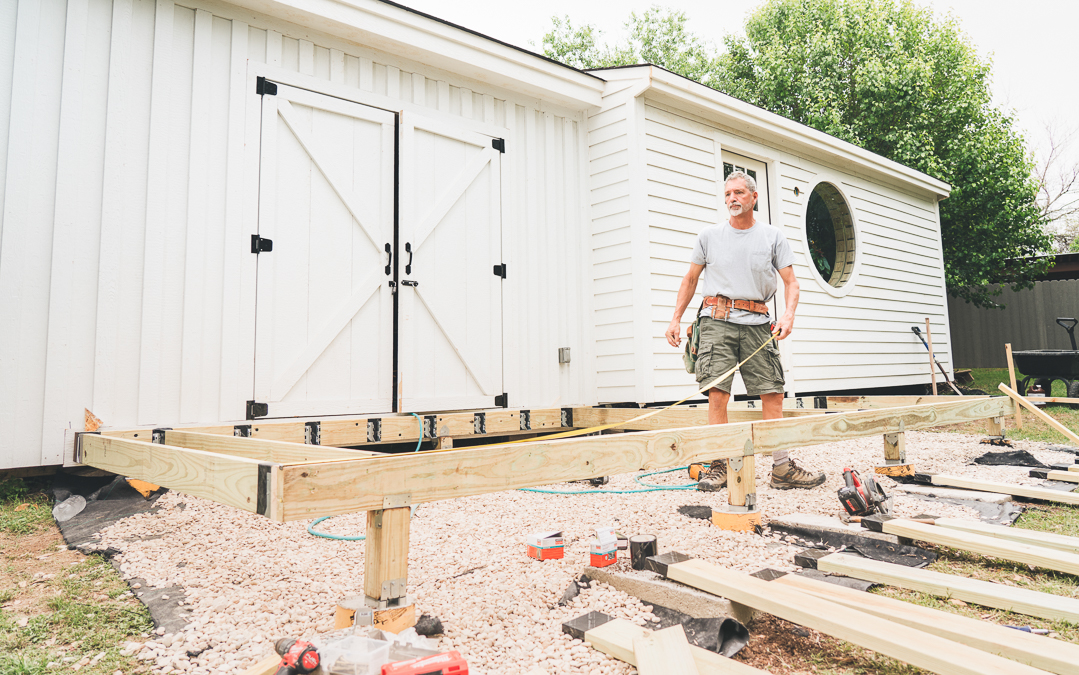
A shortage of skilled construction labor appears to have caught up with The Home Depot.
The building materials and home goods retailer has stopped writing contracts for the installation of roofing, siding, insulation, and gutters. While maintaining dozens of other installation services, the company had decided those four specialties weren’t attractive in the long term for either The Home Depot or its customers, a spokeswoman said.
“The reason for this was really because, moving forward, after taking a look at these businesses, we want to make sure we’re focusing our efforts on installation categories that allow us to enable the best customer experience while simplifying the processes and business structure for the store and the sales team,” Margaret Smith said in a telephone call.
Home Depot employees signed up customers and managed the contracts, but they didn’t actually do any of the work in the field. That was left to independent third parties, already in short supply in some parts of the country. There will be some job losses among Home Depot employees, but Smith said that these losses would represent a “really, really small percentage” of its 400,000 full- and part-time employees.
The company wasn’t specific about where job losses might occur. From this point, Home Depot will concentrate on wrapping up open contracts and servicing warranty claims on contracts they have already written.
A skilled labor shortage in the construction industry seems to be at least partly to blame for the company’s move. Asked whether the skills gap had anything to do with it, Smith said in an email, “The labor shortage is part of the issue for roofing in areas with extreme demand, such as hurricane-struck areas.”
A report posted by the NBC affiliate in Miami seems to bear that out. A Home Depot customer named Steve Rice said he signed a contract with The Home Depot to put a new roof on his house even though other roofing companies offered to do the job for less. But a year and $30,000 later, the job isn’t finished.
“My biggest worry is that it won’t get done and hurricane season will come and we won’t dodge a bullet again like we did last season,” he told the news station. “They’ve told me it’s tough to get crews. They don’t have the materials.”
The company has compensated him for damage that work crews did to his house, he said, but the roof still isn’t finished.
A similar story comes from Francisco Peña, who said he signed a contract for more than $20,000 for a new roof in 2017. It’s still not complete. The Home Depot later offered to reimburse Peña.
The station included this statement from The Home Depot: “Last year’s storms created intense demand on roofing and labor, which is not unique to The Home Depot. This is not the type of experience any customer should expect, which is one of the reasons we are winding down our roofing installation business and focusing on programs where we can deliver the best customer experience. We sincerely apologize for the delays.”
Contractors have trouble hiring
Industry trade groups have been reporting that contractors are having difficulties in hiring a variety of skilled trades, including roofers.
A workforce survey conducted by the Associated General Contractors of America last year, for example, noted that 76% of the 773 respondents said they planned to add hourly craft personnel in the year ahead, with another 61% saying they wanted to add salaried field personnel.
But getting them was another story: 81% said they were having a “hard time filling some or all positions” and only 8% said they were having no trouble at all.
Sixty-seven percent of the firms said it was harder to hire roofers than it was a year earlier; 68% said carpenters were harder to find.
The AGC survey didn’t single out installers of siding, insulation, or gutters.
The National Association of Home Builders, another industry group, said that the cost and availability of labor was second only to building material prices on a list of the most significant problems they faced this year and last.
“A chronic labor shortage in the housing industry is a problem that has been steadily gaining steam over the past few years,” a NAHB statement said. “To put it into perspective, just 13% of builders cited labor issues as an important concern in 2011, with the rate steadily rising over the ensuing years and peaking at 82% in each of the last three years (2017-2019).”
Tradesmen International, a temp service for the construction industry, put it this way: “The problem is that when the recession hit, many skilled workers who were unable to find jobs dropped out of the industry, and have never returned. Compounding this problem, a whole generation of younger workers are no longer even considering construction as a viable career option. Many high schools have phased out shop classes, and parents increasingly have steered graduates to four-year colleges and white-collar careers. Now, as older workers are retiring, there simply isn’t anyone ready to take their spots.”
A number of people and organizations are trying to do something about the shortages, including The Home Depot.
Last year, The Home Depot Foundation said it would donate $5 million a year for the next 10 years to help train workers in a variety of trades. The donation will help train 20,000 workers over the next decade with an emphasis on assisting veterans leaving the military.
At the time, the company said there were 158,000 unfilled construction jobs in the U.S.
In Congress, two Republican legislators have introduced a bill that would ease visa restrictions and allow more foreign workers into the country. Employers would have to prove they couldn’t find U.S. workers for vacant positions, and pay them fair wages based on local rates. Only legal immigrants could be hired, according to a summary of the bill by the NAHB.
Weekly Newsletter
Get building science and energy efficiency advice, plus special offers, in your inbox.















8 Comments
No one wants to work anymore, we have been living in the age of the briefcase contractor for decades now. There is an opportunity for young people in the building trades, go through the apprenticeship program if available. Accountability has always meant something, do what you say you are going to do.
Home Depot and Lowe's pay rates are too low, in our area at least. They pay what it was here in the early 90's
When I started my remodeling company I did some kitchen installs as a sub for one of the box stores in 2008 and found the pay to be fairly decent. The problems seem to come from unqualified kitchen designers, material estimators, and basically everyone on the management end at the store causing constant errors and call backs. Couple that with under skilled contractors doing the installs and it makes sense that they would step back from some of the home services.
That picture of the roofing membrane being applied is troubling me. Shouldn't one apply the membrane from the ridge to the eaves to have proper drainage overlap? It appears they are doing the opposite.
Peter,
Obviously, the upper courses of roofing underlayment lap over the lower courses. I always started at the eaves, although it's theoretically possible to start at the ridge, as long as you remember to slide the lower courses under the upper courses. (That can be awkward.)
Perhaps roofers are in short supply because they are falling off of roofs due to not wearing safety harnesses. Like in the picture above.
The way the Underlayment is installed is customary in the industry. As mentioned earlier , this is because of the need to overlap the layers to ensure if water runs down the roof and naturally continues on the path without touching the roof deck.
Is it raising industry wages?
Because if it's not raising industry wages in a competitive labor market, then it's not a real labor shortage, only so much complaining by businesses which wish they got to keep more money. They will always complain thusly.
"Unfilled construction jobs" mean, in the long term, "construction jobs that don't actually exist but which it is free for us to claim exist, because we're not willing to pay people market rate".
There can be a shortage of *experienced professionals* in a sector, but only temporarily. Higher wages will rapidly attract new hires who will gain experience and become professionals. A doctor shortage will take a lot longer to resolve (because the wage-training feedback cycle for doctoring is so much longer) than a roofer shortage. Higher wages will simultaneously encourage automation, which in roofing can be as simple as "fucking PULLEYS, bro - they like magic" instead of https://www.youtube.com/watch?v=rYjky-c0f-M , or https://www.homedepot.com/p/True-Temper-6-cu-ft-Poly-Wheelbarrow-with-Dual-Wheels-RP6DWLG8/300500159 instead of https://www.youtube.com/watch?v=rYjky-c0f-M .
The roofing industry appears to me, an outsider, to be ridiculous. It kills or paralyzes enough people to constitute a crisis in any other field. We know how to work safely around buildings, and we have for a century, but it's "too expensive" in residential roofing because of how shady and successful the low-bid offers always are.
Log in or create an account to post a comment.
Sign up Log in